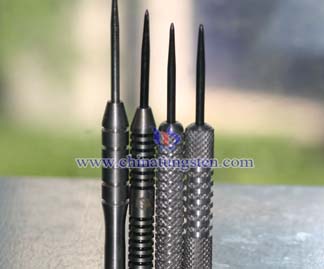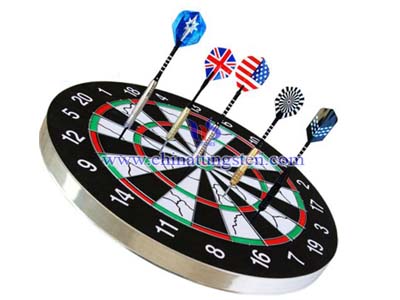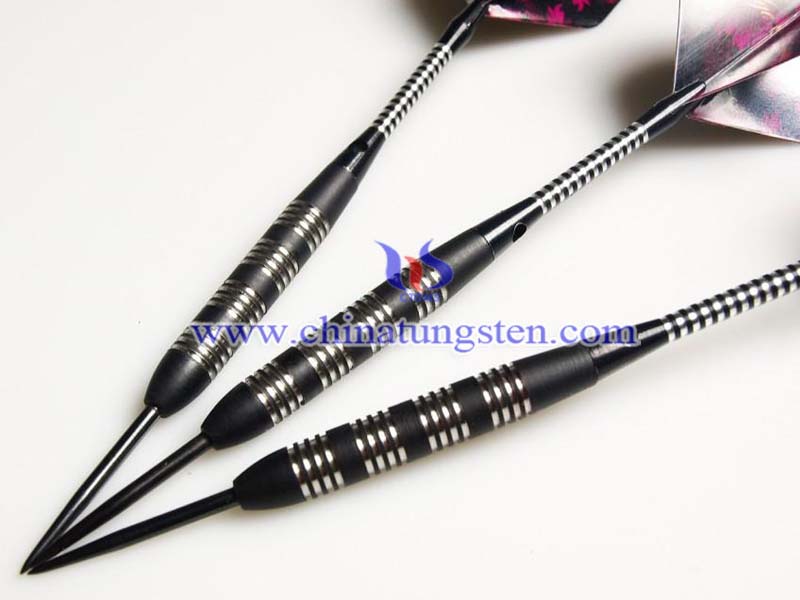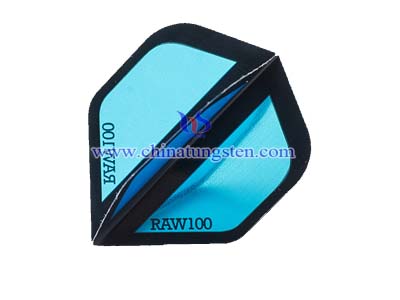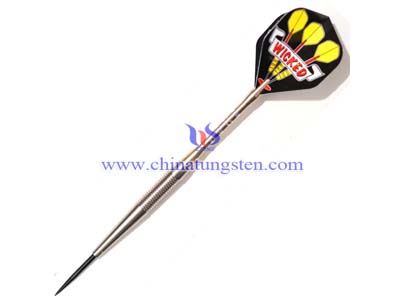Different Dart Types
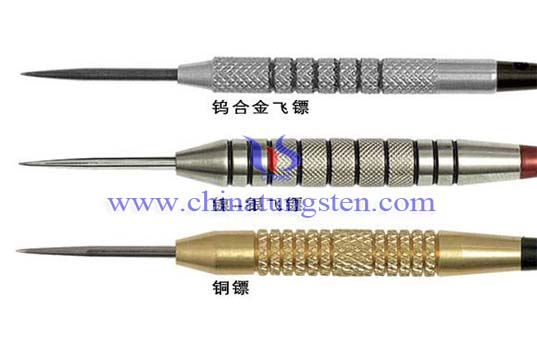
With the exception of wooden darts, both soft and steel-tip darts are made of the same materials. The major differences that will be discussed between them are weight and cost.

You don't see these around very often but they are a lot of fun to throw with. They are made of lightweight wood shaft with turkey feather flights (no parts to replace). They weigh around 12 grams so they really aren't that much lighter than electronic darts. They work just fine with any bristle board.

Brass is the lightest of the three metallic darts listed here. It is a soft alloy (copper & zinc) which makes it easy to for manufacturers to shape and work with.

Nickel-silver is yet another light dart that is an alloy consisting of nickel, copper and zinc. Like brass, it is easy for manufacturers to shape and work with.

Tungsten, unlike brass and nickel-silver, is a very heavy and dense metal. Tungsten dart is usually mixed with nickel so you will see on a package something like 80-20 (80% tungsten/20% nickel). It is harder to work with but will last longer than the other two (especially the knurling). On average, a 20 gram tungsten dart will be ½ the size of a 20 gram brass dart which will allow for tighter groupings on the board. This is the reason most of the really good throwers use tungsten dart but if you're just starting out, you won't be throwing tight groupings anyway, regardless of the dart you're using.

